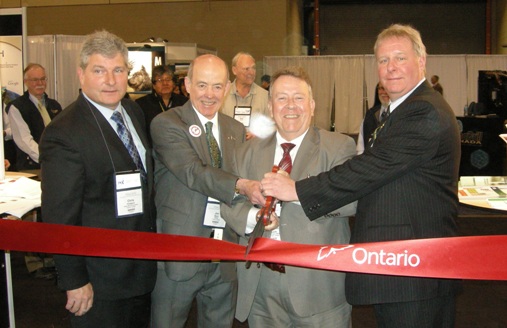Virginia Heffernan, principal of GeoPen Communications, is a science and business writer who specializes in writing about mineral and energy resources. She provides research and writing services to both corporate and government clients and is a regular contributor to publications such as Investment Executive, The Northern Miner and Canadian Consulting Engineer. www.geopen.com/
“From the Ground Up” is an autobiography of one of Canada’s most notable mining women Viola MacMillan, best known for her involvement in the infamous Windfall mining scandal of 1964. Although her autobiography presents her side of the controversial story some gaps and context were missing. Virginia Hefferernan’s thorough investigation cleared up many of those gaps and provided much needed context in the “Afterword” final chapter of the autobiography.
Afterword (March 2001)
The frenzy begins
“Some of the drillers started buying stock through their brokers, who would have told their other clients that if the drillers were buying, there must be something in the core. The market activity just blossomed from there, almost regardless of what the MacMillans did,” says Ford. Blossomed is an understatement. On Monday morning, Windfall shares opened at $1.10. Before the market closed at 3:30 PM, 1.57 million shares had changed hands and the price had reached $2. When rumours that the core contained 2.4% copper and 8% zinc surfaced later in the week, the trading accelerated and by the closing bell on July 10th, the price had doubled again to $4. “Such trading removed from the market any semblance of order and reduced it to a scene of uncontrollable speculative frenzy,” observed Justice Arthur Kelly, the judge who presided over the royal commission.
In the absence of any concrete information, the press and brokerage houses latched onto rumour. They became enthusiastic boosters of the Windfall play, fuelling even more optimism in the market. The Northern Miner congratulated the “Mining MacMillans” for taking an intelligent gamble on the Prosser claims and The New York Herald Tribune reported a “major base metal drill core.” Brokers added credence to the rumours by reporting them to investors as fact. “Frustrated by their efforts to get accurate information and feeling under compulsion to provide whatever information was available, (the brokers) gave out such reports as they were able to gather,” concluded Justice Kelly. Just like during the Bre-X mining scandal that was to hit three decades later, the information mongers whose impartiality is so vital to the investing public were either unable or unwilling to see that the emperor was wearing no clothes.
Throughout this frenzy, the MacMillans kept their lips sealed save for two statements issued to the press on July 7th and again, under orders from the TSE, on July 15th. Both releases were equivocal, saying little more than that the first hole had been stopped at 530 feet, the core had not yet been sent for assay and drilling would continue. The second release read as follows:



























 CHECK AGAINST DELIVERY
CHECK AGAINST DELIVERY